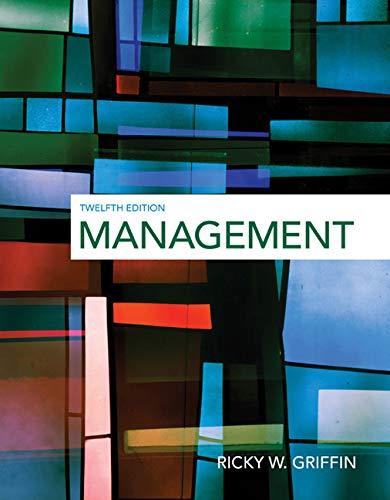Hermes, not to be confused with Hermes the French luxury goods manufacturer, is a pan-European courier company
Question:
Hermes, not to be confused with Hermes the French luxury goods manufacturer, is a pan-European courier company with over 40 years’ experience in the parcel delivery and courier business. It operates primarily in the UK, Austria, Germany, Italy, and Russia. In the UK, Hermes handles more than 245 million parcels a year. It relies on the growing “gig economy” employment trend with over 10,000 self-employed couriers and a network of 4,500 parcel shops. Hermes provides door-to-door services for many leading retailers including Next, ASOS, John Lewis, and Tesco.
With a large and disparate workforce, planning and control is the key element in ensuring that the network remains effective and robust. Hermes needed a way to move the day-to-day management of its UK courier network to decision makers on the ground. Given the unpredictable demands on the courier network, Hermès needed to be able to reallocate delivery rounds quickly if one courier was overloaded and another in an adjacent area had capacity to take up the extra work.
In the UK, there are 1.8 million unique postcode addresses. Hermes has allocated the 10,000 couriers to a number of these postcodes. The courier network is, therefore, extremely granular and subject to enormous changes on a daily basis. Initially Hermes employed a centralized system to create and update courier rounds but it started to realize that this was time consuming and that the delivery maps produced became outdated by the time the couriers started their deliveries. Hermes, therefore, decided to design management-planning tools that would strategize its courier network and engage in what-if scenarios that would allow it to plan better for a range of possibilities or incidents that may take place at any point in its chain of courier operations.
In designing the new tools, Hermes decided to opt for a dynamic online mapping system that allowed it to create, view, organize, and manage the courier rounds.
The key elements include the viewing tools, the planning and operations tool, and the scenario-planning tool. The viewing tool allows users to visualize the territories and courier rounds. The planning and operations tool that allows field management to change the structure of territories and submit their suggestions for approval. The scenario-planning tool that allows the central operations team to optimize and model territories to identify any possible efficiencies to the structure. This new planning system enables the 200 field managers to make subtle and real-time adjustments to their operative areas on a local and tactical level. It also allows the central management a chance to look at the impact and effectiveness of the changes and then approve the changes in a matter of minutes. The key benefits of the new planning tools had a direct and positive impact on the goals of the organization. There were operational savings (expenses and delivery costs were cut) and an improvement in service performance and efficiency. Courier turnover dropped as network members had a more even workload. It provided a holistic view of the network, allowed peak planning, and a continuous review of the network. Field managers can access the system via an iPad and they can make and see their planning changes immediately.
The new planning system is scalable; so as Hermes continues to grow, it recognizes the need to make continuous and significant changes to the structure of its courier network. The system allows Hermes to visualize and identify existing and potential problems and model solutions for the problems.
DISCUSSION QUESTIONS
8-1. How can a planning and mapping software help Hermes in improving its operations?
8-2. What were some of the problems that Hermes experienced as a courier services company?
8-3. Would it be valuable for Hermes to gather competitive intelligence? Why?
8-4. What other trends in courier delivery could affect Hermes in the future?
Step by Step Answer:






